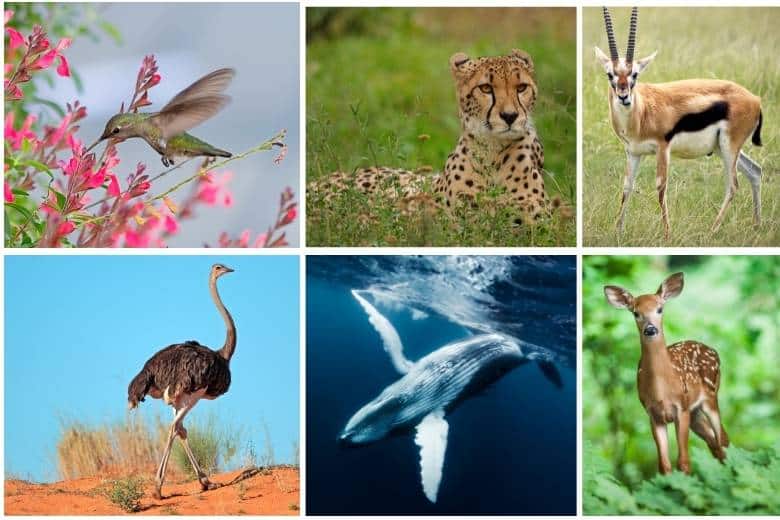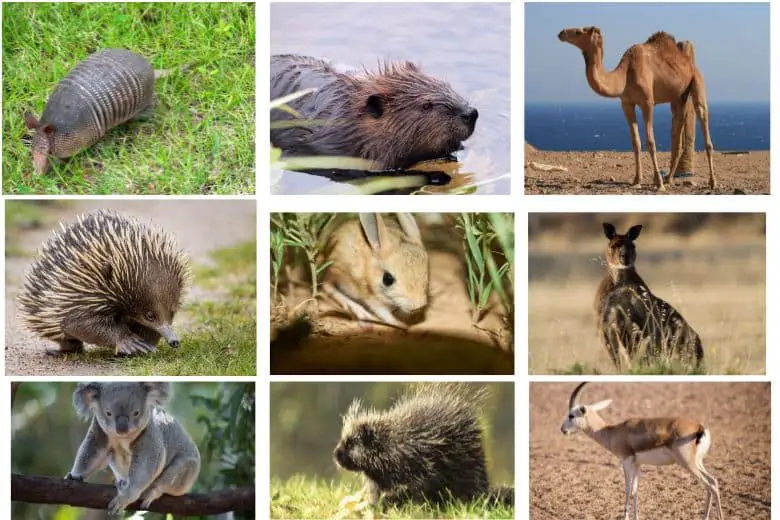There are many animals that have incredibly fast heartbeats. The cheetah, for example, has a heart rate that can reach up to 200 beats per minute when it is running at full speed. Other animals with high heart rates include hummingbirds (up to 1,260 beats per minute) and rabbits (up to 300 beats per minute).
The animal with the fastest heartbeat, however, is probably the pygmy shrew. This tiny mammal has a heart rate of up to 1,200 beats per minute, which means that its heart beats more than 20 times per second!
1. Hummingbird

The animal kingdom is full of fascinating creatures, each with their own unique abilities. Among them is the animal with the fastest heartbeat. This record-breaking animal is the hummingbird.
These tiny birds are capable of flying at speeds of up to 60 miles per hour. Their wings beat so fast that they create a humming sound. And their hearts beat an astonishing 1,260 times per minute. To put that in perspective, a human heart typically beats 60-80 times per minute.
The hummingbird’s fast heartbeat is necessary to fuel its high-energy lifestyle. Their metabolism is about 10 times that of a human, meaning they need to eat constantly to maintain their energy levels.
While the hummingbird may have the fastest heartbeat of any animal, there are other creatures with similarly impressive abilities. The ostrich, for example, can run faster than any other land animal. And the blue whale has the largest heart of any living creature, weighing in at over 400 pounds.
No matter what their record-breaking ability may be, all of these animals are amazing examples of the diversity and wonder of the natural world.
2. Cheetah

The cheetah is a large felid of the subfamily Felinae that occurs in North, East and Southern Africa, and a few parts of Iran. The cheetah is the fastest land animal, capable of running at 80 to 128 km/h (50 to 80 mph), and as such has several adaptations for speed, including a light build, long thin legs and a long tail.
The cheetah’s top speed has been measured at around 110 km/h (68 mph), but it can sustain this only over short distances of 460–600 m (1,500–2,000 ft).
The cheetah typically weighs between 21 and 55 kg (46 and 121 lb), making it the smallest of the big cats.
The cheetah’s heart rate beats per minute is between 150 and 190.
3. Ostrich
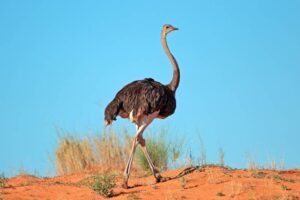
The ostrich is a flightless bird that is native to Africa. The ostrich is the largest bird in the world and can weigh up to 400 pounds. The ostrich also has the largest heart of any land animal weighing up to 9 pounds. The ostrich has a heart rate of up to 60 beats per minute.
4. Blue Whale

The Blue Whale is a marine mammal belonging to the baleen whale suborder. At up to 30 metres in length and with a maximum recorded weight of 173 tonnes, it is the largest animal known to have ever existed. Blue Whales are thought to have a maximum lifespan of around 90 years.
The Blue Whale’s heart beats just six times per minute, and its massive body weight means that each heart beat pumps an incredible amount of blood around its body. A single adult Blue Whale can weigh up to 150 tonnes, and its heart can weigh up to 600kg.
5. Elephant
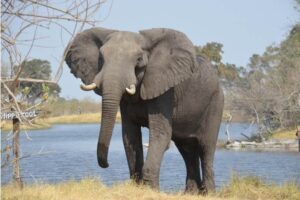
Elephants are some of the largest animals on land, and they have a correspondingly large heart. The average elephant heart weighs between 25 and 45 pounds (11.3 and 20.4 kg) and beats around 30 times per minute. elephants weigh in at around two hundred sixty to two thousand pounds (eleven to nine hundred kilograms).
6. Mouse
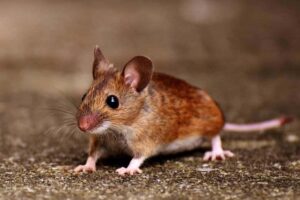
The mouse is a small mammal of the rodent family. Mice are very common in the world and are found in nearly every habitat. They are generally nocturnal creatures and are known for their high reproductive rates.
Mice have a heart rate of around 400 beats per minute. They typically weigh between 20 and 40 grams, and their hearts typically weigh between 0.1 and 0.2 grams.
7. Gazelle
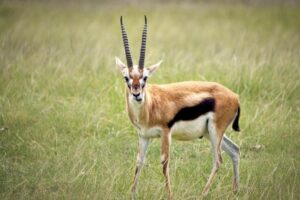
The gazelle is a mammal of the family Bovidae and genus Gazella. Gazelles are known for their grace and elegance and can reach speeds of up to 60 miles per hour. There are many different species of gazelle, including Thomson’s gazelle, red-fronted gazelle, and mountain gazelle.
The average heart rate of a gazelle is 150 beats per minute. Gazelles typically weigh between 100 and 200 pounds, and their hearts typically weigh between 1 and 2 pounds.
8. Lion
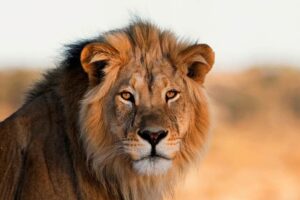
The lion is a large cat of the Felidae family. The typical male lion, weighing in at around 420 pounds, is generally considered the second-largest living cat after the tiger. Male lions boast a distinctive mane of long hair that varies in color from blond to black. This mane serves to protect the lion’s neck during fights and also makes the lion appear larger and more intimidating to potential predators or prey. Females typically weigh about 280 pounds and lack a mane.
The lion’s heart beats at around 60 beats per minute, and its weight is between 120 and 190 pounds. The heart weight is about 12 pounds.
9. Deer

The deer is a beautiful and graceful creature that is popular in many cultures. The deer is known for its gentle nature and its ability to symbolize peace and serenity. The deer is a very popular animal in many parts of the world and is hunted for its meat and antlers. The deer has a very high heart rate of about 150 beats per minute and can weigh anywhere from 30 to 300 pounds. The deer’s heart is also very large, weighing about 3 pounds.
10. Rabbit

Rabbits are small, furry animals with long ears. They are known for their cute, fluffy appearance and their ability to reproduce quickly. Rabbits are herbivores, which means they only eat plants.
Rabbits have a very high heart rate, averaging between 130 and 150 beats per minute. This is due to their small size and high metabolism. A rabbit’s heart weighs only about 1 ounce (28 grams).
Rabbits come in a variety of sizes, but the average adult rabbit weighs between 3 and 4 pounds (1.4 to 1.8 kilograms).
11. Squirrel

The squirrel is a small, furry rodent that is found in many parts of the world. Squirrels are known for their playful nature and their love of nuts and acorns.
The average squirrel has a heart rate of 100 beats per minute. Squirrels typically weigh between 1 and 2 pounds, and their hearts typically weigh between 0.1 and 0.2 pounds.
12. Beaver

The beaver is a large, nocturnal, semiaquatic rodent. The beaver’s diet consists mostly of aquatic plants and woody vegetation. The beaver is a keystone species, playing a vital role in creating and maintaining aquatic ecosystems. The beaver is a very social animal, living in colonies of up to 12 individuals.
The beaver’s heart rate is approximately 60 beats per minute. The average beaver weighs between 35 and 60 pounds, and the average heart weighs between 12 and 24 ounces.
13. Koala

The koala is a marsupial from the family Phascolarctidae. Native to Australia, it is the only extant representative of its family and its closest living relatives are the wombats. The koala is found in coastal regions of eastern and southern Australia, from Queensland to South Australia and Tasmania. It is easily recognizable by its stout, tailless body and large head with round, fluffy ears and large, spoon-shaped nose. The koala has a body length of 60–85 cm and weighs 4–15 kg. Pelage colour ranges from silver grey to chocolate brown. Koalas from the northern populations are typically lighter in colour than those from the southern populations. These species are typically ashen grey with a white chest and stomach.
The koala is an arboreal herbivore which inhabits eucalyptus forests and the leaves of these trees make up most of its diet. Because this diet has little nutritional and caloric content, koalas are largely sedentary and sleep up to 20 hours a day. Adult koalas typically weigh between 4 and 15 kg. Males are larger and heavier than females. The average adult male is about 80 cm long and weighs 13 kg, while the average adult female is about 75 cm long and weighs 10 kg. Males typically have a larger head and body than females. The average male koala has a head and body length of 60 cm, while the average female has a head and body length of 55 cm. The average weight of an adult male koala is 13 kg, while the average weight of an adult female koala is 10 kg.
The koala has a slow-moving lifestyle and sleeps up to 20 hours a day. Its diet of eucalyptus leaves is low in nutrients, so the koala has a very low metabolic rate. As a result, it does not sweat or pant to regulate its body temperature, and it has very little body fat. The koala has a body temperature of 34–35 °C and a heart rate of 30–40 beats per minute.
14. Opossum
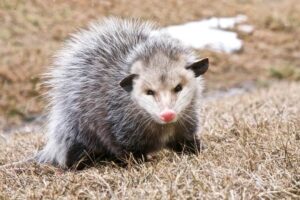
The opossum is a marsupial of the order Didelphimorphia endemic to the Americas. The largest order of marsupials in the Western Hemisphere, it comprises 103 or more species in 19 genera. Opossums originated in South America and have spread North, reaching Central America and southern North America.
Heart rate: 250 bpm
Weight: 3-9 kg
Size: 30-70 cm
Heart weight: 20-30g
15. Raccoon

The raccoon is a small to medium-sized mammal native to North America. The raccoon is the largest of the procyonid family, having a body length of 16 to 21 inches and a tail length of 12 to 16 inches. Males are usually larger than females. The raccoon is an omnivorous animal and is proficient at climbing, which allows it to access many food sources. Raccoons are relatively intelligent animals and have been known to solve simple puzzles. The average lifespan of a raccoon is 2 to 3 years in the wild and up to 20 years in captivity.
The average heart rate for a raccoon is beats per minute. The average weight of a raccoon is 10 to 30 pounds. The average size of a raccoon is 16 to 21 inches long. The average heart weight of a raccoon is 3 to 4 ounces.

